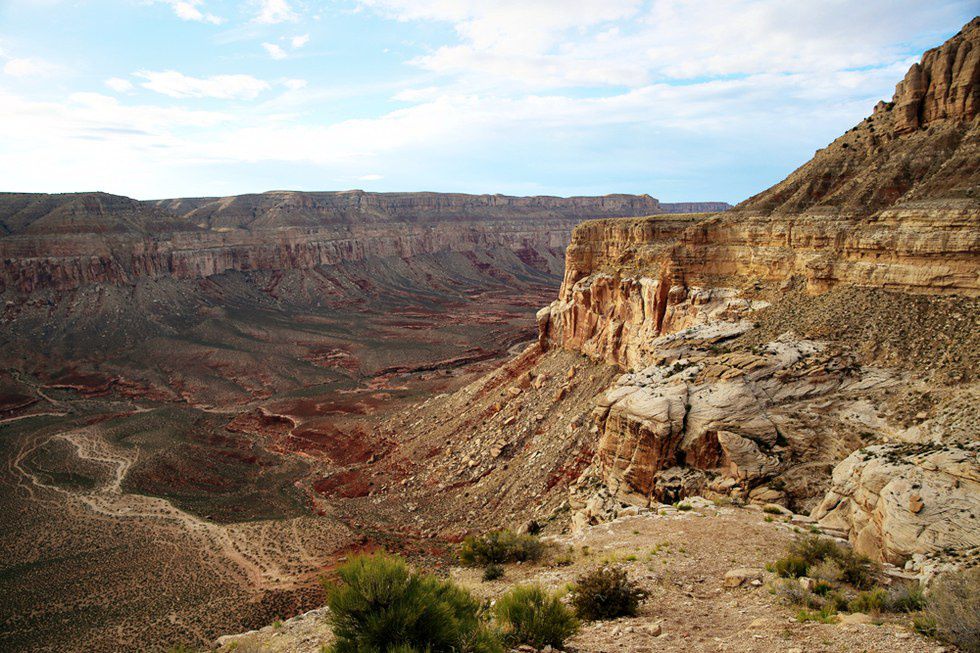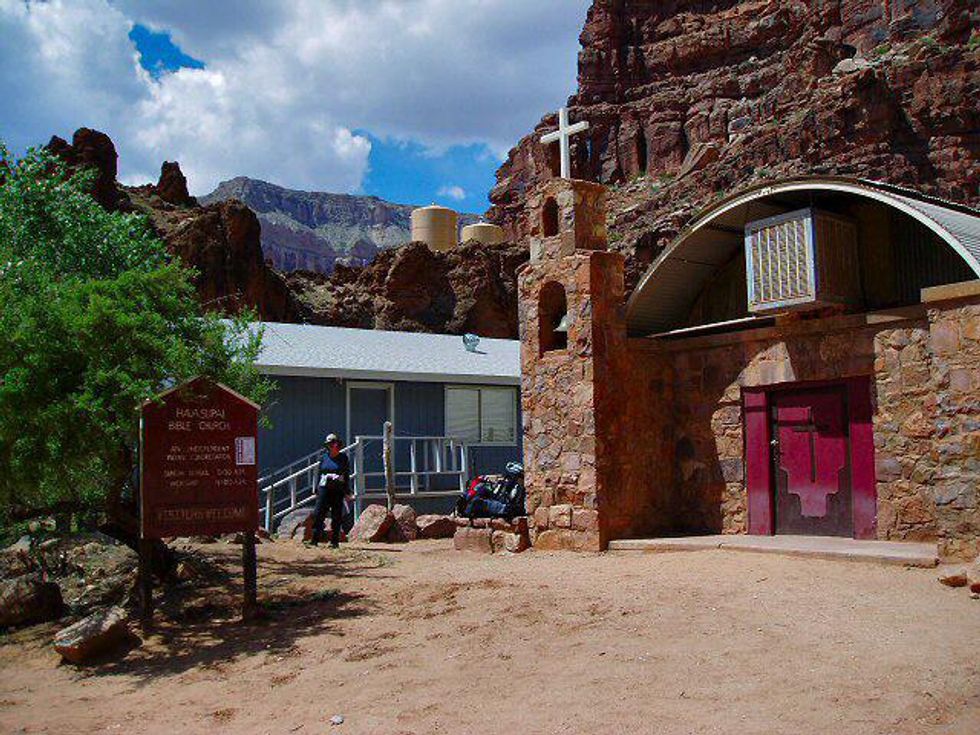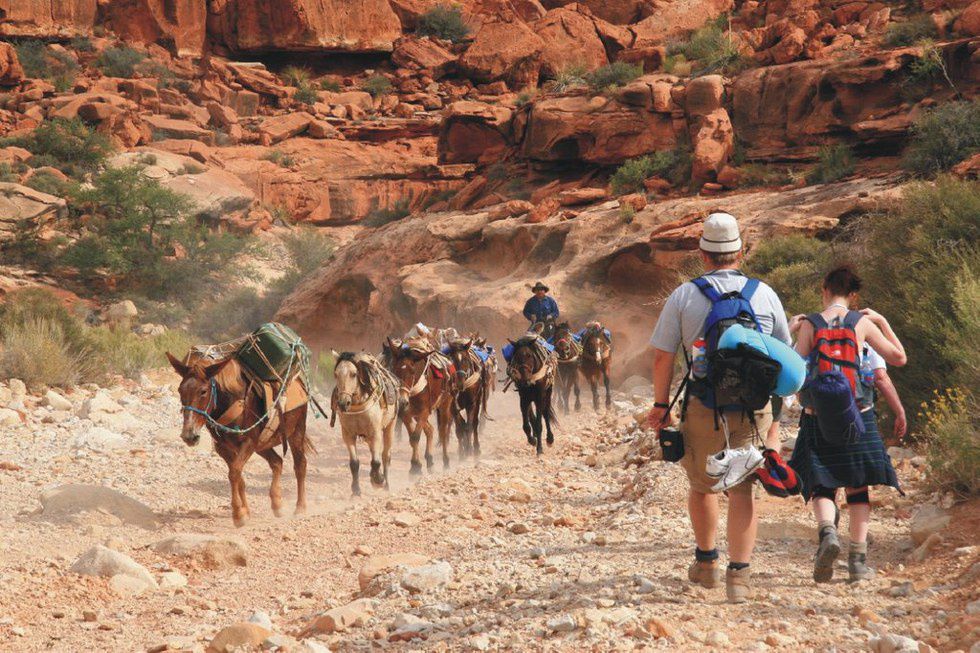For many of you, the picture above may look familiar. For the last several years Havasupai has been a social media sensation and for good reason; it is a magnificent oasis in the middle of the Arizona dessert. To get to this amazing place, one has to hike 10 miles in from a hilltop parking lot. The lot smells like mule piss and the hike is brutal. However, it is an adventure that everyone should take, but not without appreciating the indigenous people that call this place home.
The hike to Havasupai Falls begins on top of Havasu canyon rim. The trail drops about 1,000 feet in the first half mile before winding and twisting along the valley floor. Along the way, red sandstone, tiny creeks and the remnants of mule skulls litter the trail. During the 10 mile hike, you are sure to encounter the Havasupai people hauling supplies, mail and tourists backpacks on the backs of large mule trains. The picture below shows the view from the parking lot of Havasu canyon.
The word “Havasupai” means, "people of the blue-green water." For centuries, the Havasupai indigenous people harvested corn, melons and pumpkins without the disruption of European explorers. In the 1800's, however, they began to encounter many travelers looking for mineral riches in the Grand Canyon. Theodore Roosevelt upon visiting the acres, established much of the Havasupai’s homeland as a national park and in 1928. The National Park Service forced them onto a 518-acres reservation in Havasu Canyon. Finally in 1975, 185,000 acres of the Havasupai’s ancestral home was returned to the tribe.
Today, most of the Havasupai tribe live in Supai village. The village is located in Havasu Canyon. A person hiking to Havasupai Falls will encounter the village approximately 8 miles in. There are not roads to the village, supplies are all delivered on the backs of mules that ride the 8 miles from the canyon rim to the village daily. It is a strange thing walking into Supai village. In the center of the town, there is an elementary school, a café and a supplies store. The place is a strange mix of new and old. There are no cars to be seen, people are speaking a mix of English and their native language. In order to continue school after elementary, students must make the mule ride 8 miles out of the Canyon and then drive another 60 miles to the nearest town. As a result, many children are home schooled or do not attend school beyond 5th grade. Packs of semi-tame dogs roam the canyon near Supai village. Below is a photo of the church in Supai village.
For the Havasupai people, tourism is arguably the where most of their revenue comes from. Most villagers who live in Supai make their living packing tourists backpacks or selling things to tourists. The Havasupai are a welcoming and helpful people, but irritation occurs with hikers disgrace their sacred grounds. When traveling to Havasupai Falls and through Supai village it may be easy to forget that we are guests of the Havasupai people and should thus treat them and their home with respect. Havasupai Falls is a spiritual place, not just an Instagram opportunity.
























